Just looking for our Best Gym Website examples list?
Key Takeaways:
To ensure your gym’s site achieves strong rankings—especially in AI-generated overviews—while genuinely serving potential clients, keep these strategic takeaways front and center:
- Prioritize a fast, responsive design across devices.
A clean, mobile-first layout with short load times and intuitive navigation keeps users engaged and signals search engines that your site is trustworthy and relevant. - Use high-quality visuals and interactive features to captivate visitors.
Incorporate dynamic images, background video, and interactive elements like online booking, BMI calculators, or class schedules to immerse readers and support conversions. - Embed gym‑specific tools and clear CTAs for seamless conversions.
Direct links to free trials, membership sign-ups, class schedule booking, and integration with gym management software reduce friction and guide users toward becoming paying members. - Build credibility through brand-driven design and SEO best practices.
Showcase testimonials, transformation stories, and trust signals, while optimizing with schema, clear headings, and internal links to enhance both user experience and search visibility.
Why Great Gym Website Design Is the Key to Growing Your Fitness Business
When it comes to attracting new members, retaining existing ones, and standing out in a competitive market, your gym website does far more than just list your hours and show a few photos. Today, your site is your most powerful marketing tool—often the first impression a potential client will have of your brand. And if that impression doesn’t scream professionalism, trust, and energy, they’ll bounce faster than your next HIIT class.
But here’s the kicker: most gym websites still look like they were built in 2010. They’re not mobile-friendly, they load slowly, and they fail to drive any action, whether that’s scheduling a free trial or signing up for a class. If your gym’s online presence isn’t built with conversion and performance in mind, you’re leaving money on the table and letting competitors win your local search traffic.
A high-quality gym website design combines responsive layouts, strong branding, fast load times, and seamless booking functionality to create a streamlined user experience across any mobile device. It turns passive browsers into active members and supports your gym management software behind the scenes. Whether you’re running a boutique fitness studio or scaling your second location, optimizing your homepage, class schedule, and membership funnel is essential to growth.
This guide breaks down the strategies, tools, and overlooked SEO opportunities that separate the best gym websites from the forgettable ones. If you’re ready to transform your site into a conversion powerhouse, you’re in the right place.
Website Planning and Purpose for Gym Businesses
Before a single image is uploaded or a line of code is written, effective website design begins with a deep understanding of your business goals and user needs. Planning is where the foundation is laid, and for gym owners, this means more than just picking a template—it means crafting a digital strategy that converts browsers into loyal members.
Start by defining your core objectives. Are you trying to drive more local leads, automate class booking, improve gym membership retention, or all of the above? Clarifying your goals early shapes everything from your homepage layout to your navigation and call-to-action placements.
Know your audience. Is your gym focused on strength training, HIIT, personal coaching, or youth athletics? Each niche speaks to different demographics and requires tailored messaging and design elements. A gym catering to busy professionals may emphasize convenience and mobile scheduling, while a strength training facility might showcase client PRs, trainer bios, and competitive pricing tiers.
Finally, consider your competitors and what sets your brand apart. Take inventory of what the best fitness websites are doing right—and where you can differentiate. This may include emphasizing your facility’s unique atmosphere, instructor credentials, community involvement, or proprietary programs.
By treating the planning phase as a strategic initiative, you’ll ensure every aspect of your website—design, content, tools, and SEO—is built to support your growth, visibility, and conversion goals.
Key Site Design Principles
Effective design is not just about aesthetics—it’s about function, clarity, and motivation. The right design principles help guide your visitors to take action while reinforcing your brand identity. The stakes are especially high in this industry since a poorly designed site can lead to lost sign-ups, missed class bookings, and declining member interest.
Start with visual hierarchy. Use bold headlines to grab attention, structured layouts to guide the eye, and whitespace to reduce overwhelm. Make it easy for users to quickly understand who you are, what you offer, and how to take the next step—whether that’s signing up for a free trial, checking out a class schedule, or exploring memberships.
Navigation should be simple and intuitive. Limit top-level menu items to core pages like Home, About, Classes, Trainers, and Contact. Consider including sticky headers for faster access to your call-to-actions. Every page should be no more than three clicks away from any other, maintaining a clear path to conversion.
Mobile optimization is non-negotiable. With most users accessing fitness websites on their phones, ensure the mobile version is just as easy to use as the desktop experience. Responsive design, fast load times, and thumb-friendly buttons should be standard across the board.
Consistency is also key—colors, fonts, imagery, and messaging should align with your gym’s brand voice. Choose a color palette that reflects your gym’s energy and use professional imagery that showcases your facility, trainers, and real members in action.
Finally, embed clear, compelling calls-to-action throughout your site. Buttons like “Start Your Free Trial,” “Book a Class,” or “Tour Our Gym” should stand out visually and be present on every major page. To explore more about how to drive conversions and visibility through design and content, check out our insights on the best marketing strategies for gyms.
Design principles form the visual and functional DNA of your website. Execute them well, and your website will look great, and it will become one of your most valuable business tools.
Website Content and Navigation
Creating content that aligns with user expectations and structuring navigation that guides them naturally is essential for any website. Visitors should never feel lost or overwhelmed. Instead, they should be able to scan, scroll, and click their way seamlessly through your site, finding answers, exploring services, and taking action with ease.
Begin with content that speaks directly to your target audience. For most gyms, this includes sections like “Classes We Offer,” “Meet Our Trainers,” “Membership Plans,” and “Why Choose Us.” Every content block should be benefit-driven, using simple language that emphasizes outcomes like improved health, convenience, flexibility, or personal support. Include testimonials, transformation photos, or short video clips to build trust and show real results.
Your homepage should provide an engaging snapshot of your gym’s brand and offerings. It should immediately answer the visitor’s top three questions: Who are you? What do you offer? How do I get started? Keep the content tight, visual, and focused around a single call-to-action like “Book a Free Trial” or “View Our Class Schedule.”
For internal pages, structure content into clear sections with subheadings and short paragraphs. Use bulleted lists for easy scanning, especially when outlining class benefits, pricing tiers, or membership perks. Each page should have a clear goal—whether it’s to inform, persuade, or convert—and that goal should be reflected in the headline, copy, visuals, and call-to-action.
Navigation should be user-first, not content-first. Organize your menu based on what your visitors are looking for, not how your business is structured. Group pages into logical categories like “Get Started,” “Programs,” “Our Team,” and “Join Now.” Make sure your call-to-action buttons appear in the header, mid-page, and footer of your most important pages.
Strong content paired with intuitive navigation ensures that potential clients stay longer, explore more, and convert faster. It’s the difference between a website that simply informs and one that actively grows your fitness business.
Visual Elements That Strengthen Site Design
Visual elements do more than make your website look good—they create emotional connections, support clarity, and guide users toward taking action. In the fitness industry, where energy, transformation, and credibility are key, strategic visuals can shape the entire user experience and elevate your brand presence.
Start with high-quality, professional imagery. Use real photos of your gym’s interior, trainers, and members in action. Avoid generic stock images that feel disconnected. Authentic visuals give potential clients a realistic sense of your atmosphere, making them more comfortable and confident in booking a class or trial session.
Video is another powerful tool. Embed a short welcome video on your homepage, include walk-through tours of your facility, or share trainer tips and member success stories. Videos help bring your brand to life and give your audience a glimpse of the experience they can expect.
Color and typography should reflect your brand personality. A high-intensity gym may use bold colors and sharp fonts, while a wellness-focused studio might use calming tones and softer visuals. Whatever your style, consistency matters. Use your brand colors and fonts throughout your site to create a cohesive, memorable experience.
Icons and graphics can simplify complex information. Use them to represent membership levels, class types, or unique benefits. Pair these visual cues with concise text for better scannability and faster comprehension.
Whitespace plays a vital role in letting your visuals and copy breathe. Don’t overcrowd your pages. Give each element room to stand out, making it easier for visitors to process what they see and take the next step.
When thoughtfully integrated, visual elements drive engagement, boost clarity, and reinforce your credibility. To see how top performers do it, explore our curated examples of the best personal trainer website designs for inspiration.
Ongoing WordPress Maintenance for Gym Websites
Once your website is launched, the work doesn’t stop. Ongoing WordPress maintenance is essential to keep your site running smoothly, secure from threats, and optimized for performance. Regular upkeep helps prevent broken features, slow load times, and outdated content—issues that can quickly erode trust with your audience and damage your rankings in search engines.
Maintenance begins with plugin and theme updates. These components must stay current to ensure compatibility, security, and access to the latest features. Delay updates too long, and you risk exposing your site to vulnerabilities or creating conflicts that break functionality. Schedule routine updates, preferably weekly, and always back up your site before making changes.
Security monitoring is another must. Use security plugins that scan for malware, block brute force attacks, and log suspicious activity. Pair this with uptime monitoring so you know the moment your site goes down and can resolve it before your members notice.
Performance optimization should also be part of your monthly routine. Clear your cache, compress images, remove unused plugins, and audit page speeds to ensure the user experience remains fast and frustration-free, especially important for mobile users navigating your class schedule or booking a free trial.
Finally, review your site content regularly. Is your schedule current? Are promotions still valid? Are new programs or team members represented on the site? Updating this content helps with SEO and shows prospects that your gym is active, relevant, and growing.
A well-maintained WordPress website is not just functional—it’s a reflection of your gym’s professionalism. Prioritize ongoing maintenance to extend the life of your investment, improve security, and provide a seamless experience for current and future members.
Best Gym Website Design Examples

1. Hardcore Fitness Bootcamp
Location: Los Angeles, CA
3 Key Takeaways:
- Dynamic homepage video that immerses visitors in the workout atmosphere.
- Sleek mobile experience with high-contrast CTAs for booking classes.
- Strong brand presence with consistent use of red and black color palette.

2. Equinox
Location: New York, NY
3 Key Takeaways:
- Elegant visual storytelling with aspirational lifestyle photography.
- Minimalist layout that conveys luxury and exclusivity.
- Intuitive navigation that guides users through locations, memberships, and amenities.
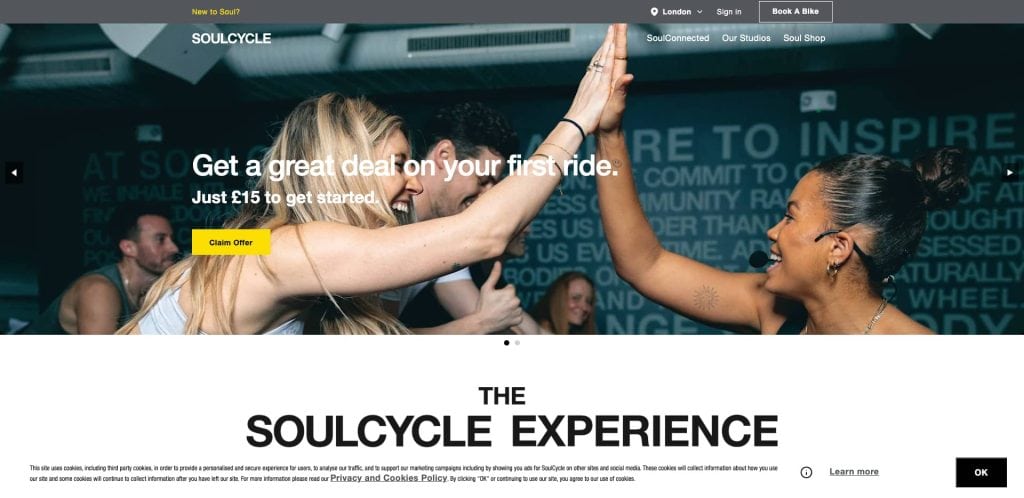
3. SoulCycle
Location: New York, NY
3 Key Takeaways:
- Vibrant design with energetic imagery and animation.
- Easy-to-use class scheduler integrated with account login.
- Strong community messaging to drive engagement.
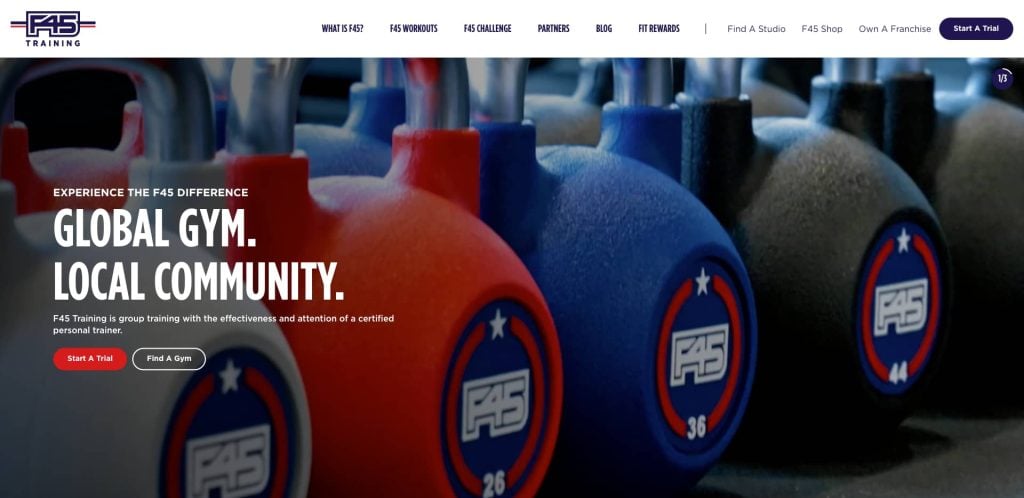
4. F45 Training
Location: Austin, TX
3 Key Takeaways:
- Bold design with immediate CTA to try a free class.
- Engaging video snippets of workouts to show the real member experience.
- Geolocation feature to find the nearest studio quickly.

5. Orangetheory Fitness
Location: Boca Raton, FL
3 Key Takeaways:
- High-energy homepage video and brand story.
- Easy navigation with clear membership and location info.
- Color-coded workout visuals for easy comprehension.

6. The Barre Code
Location: Chicago, IL
3 Key Takeaways:
- Feminine, motivational design style with branded yellow accents.
- Optimized for mobile with a strong conversion-driven layout.
- Seamless booking integration and location finder.

7. Fit Results
Location: Chicago, IL
3 Key Takeaways:
- Urban, gritty aesthetic aligned with brand identity.
- Simplified class sign-up with a user-friendly mobile design.
- Clear CTAs and testimonials to drive conversions.
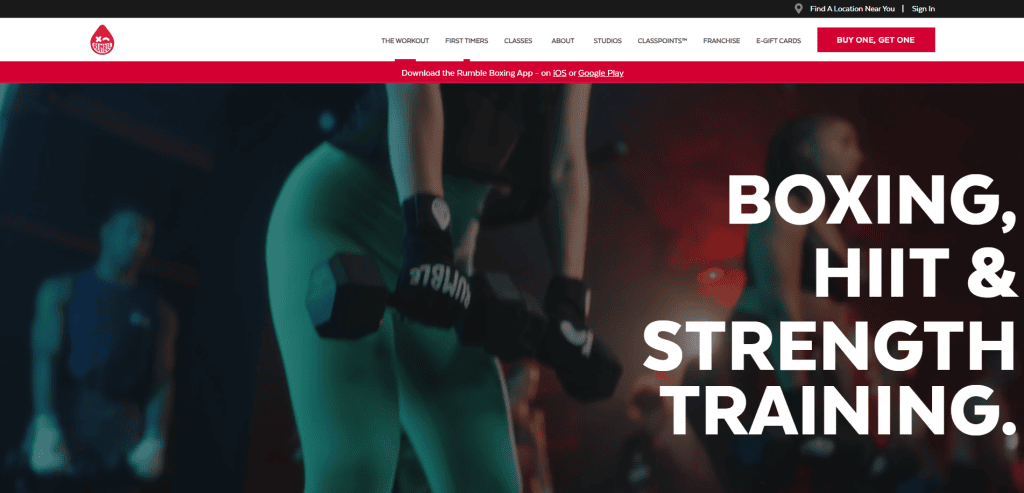
8. Rumble Boxing
Location: New York, NY
3 Key Takeaways:
- High-energy video content on the homepage.
- Emphasizes pop culture and music integration in workouts.
- Simple layout that funnels directly to booking.
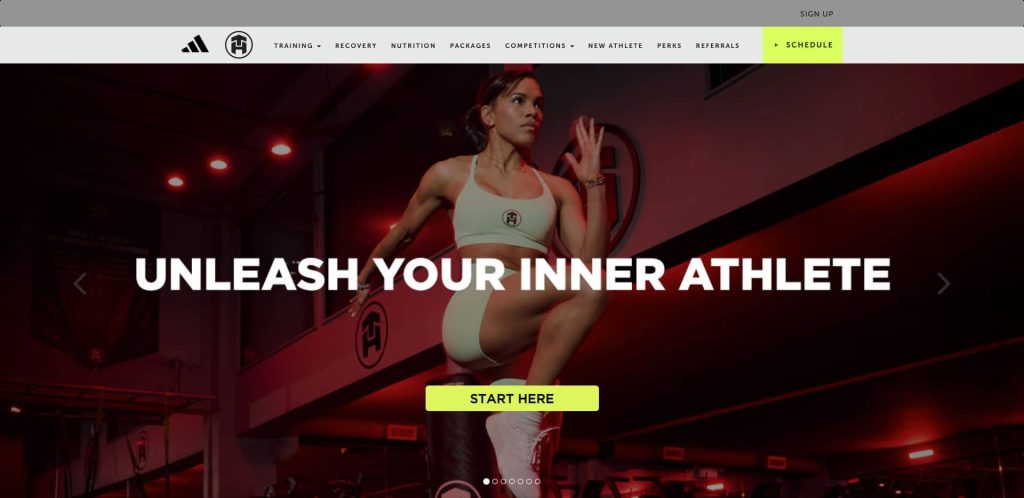
9. Tone House
Location: New York, NY
3 Key Takeaways:
- Athletic, high-performance design theme.
- Motivational video with class previews.
- Streamlined schedule navigation.
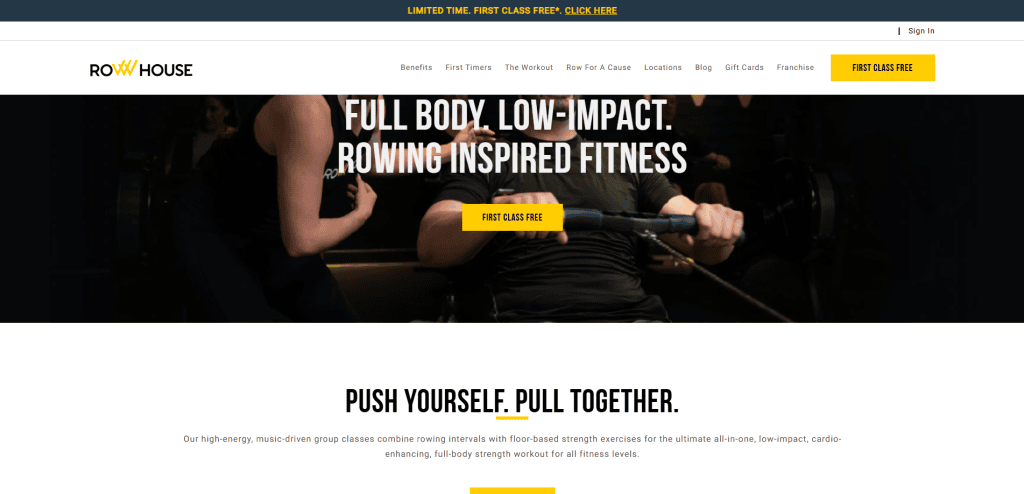
10. Row House
Location: Irvine, CA
3 Key Takeaways:
- Niche rowing theme with fitness education.
- Smooth user experience and lead-gen CTAs.
- Strong sense of team culture communicated visually.
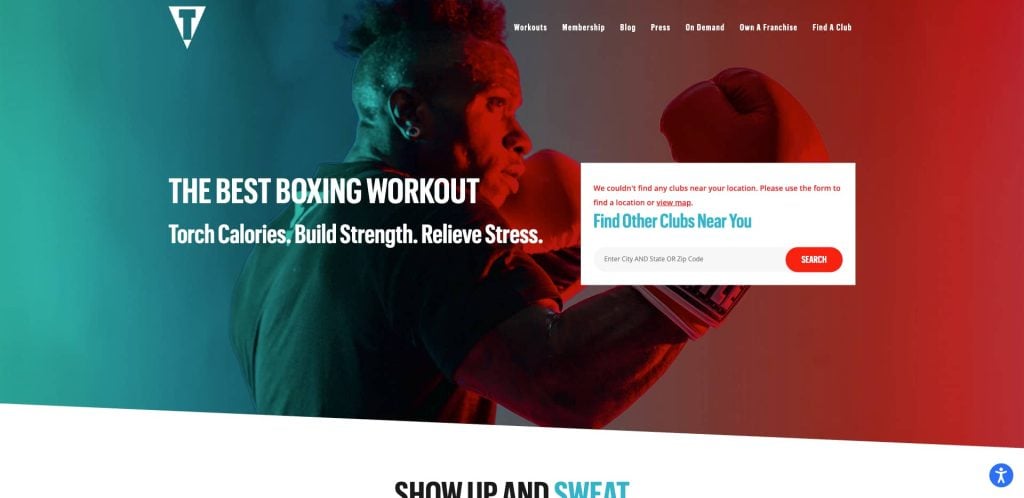
11. TITLE Boxing Club
Location: Kansas City, MO
3 Key Takeaways:
- Bold visuals and a red color scheme for impact.
- Clear emphasis on trial offers and local memberships.
- Location selector upfront for faster navigation.
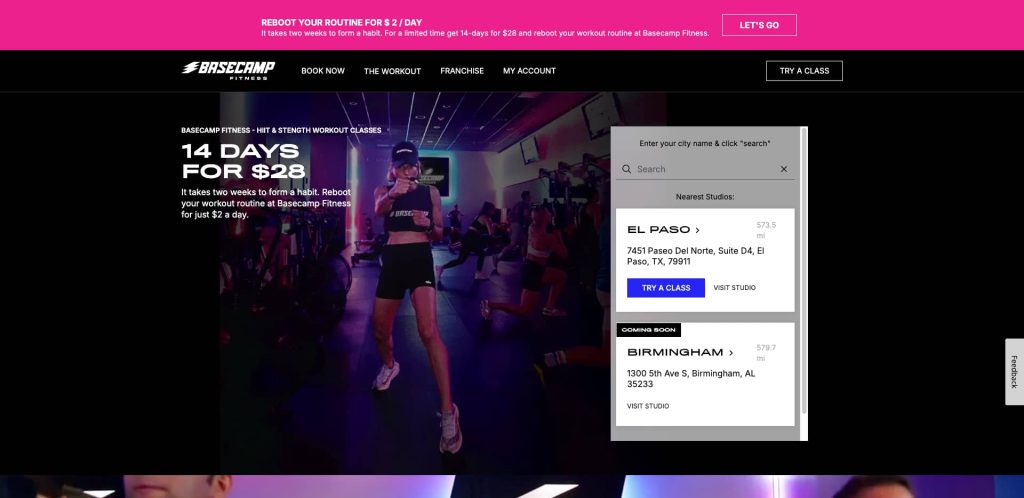
12. Basecamp Fitness
Location: NJ & SC
3 Key Takeaways:
- Playful iconography and brand elements.
- Simplified sign-up flow with guided options.
- Informative homepage with animated features.

13. Gold’s Gym
Location: Hollywood, CA
3 Key Takeaways:
- Heritage-focused design with modern updates.
- Interactive gym finder by state and city.
- Transparent membership pricing and testimonials.

14. TruFusion
Location: Las Vegas, NV
3 Key Takeaways:
- Colorful gradients and layered textures.
- User dashboard integration and detailed class info.
- Dynamic schedule interface.
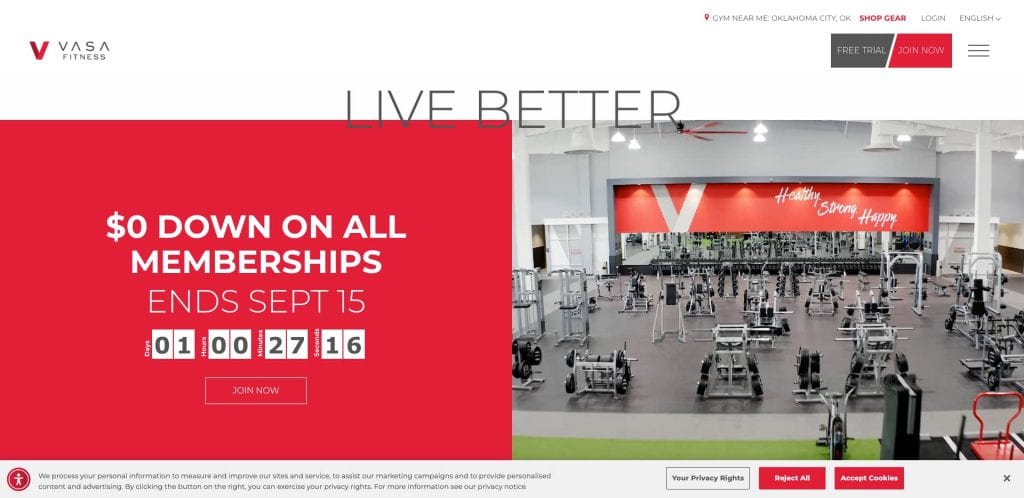
15. VASA Fitness
Location: Denver, CO
3 Key Takeaways:
- Community-focused imagery and testimonials.
- Strong contrast and CTA buttons throughout.
- Features virtual class options front and center.
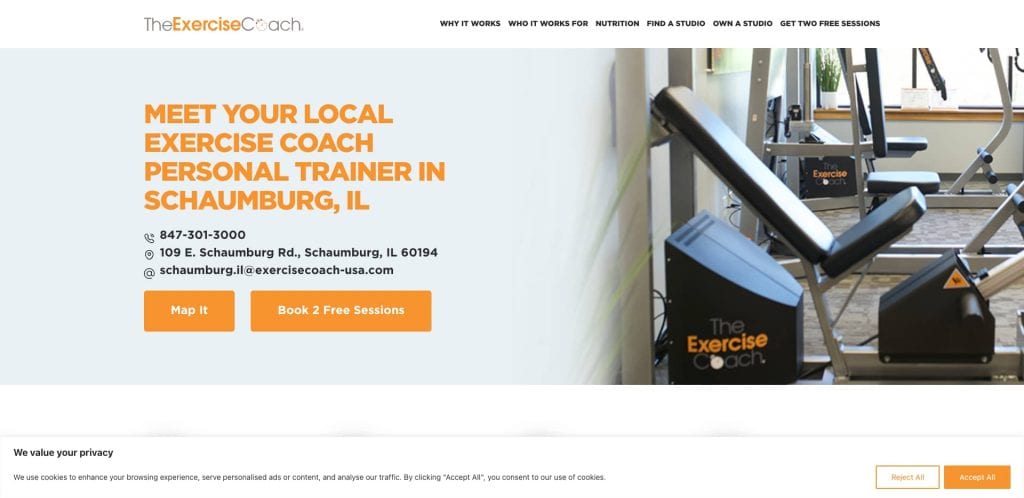
16. The Exercise Coach
Location: Schaumburg, IL
3 Key Takeaways:
- Modern design with franchise appeal.
- Tech-driven fitness approach highlighted in visuals.
- Clear site architecture and navigation.
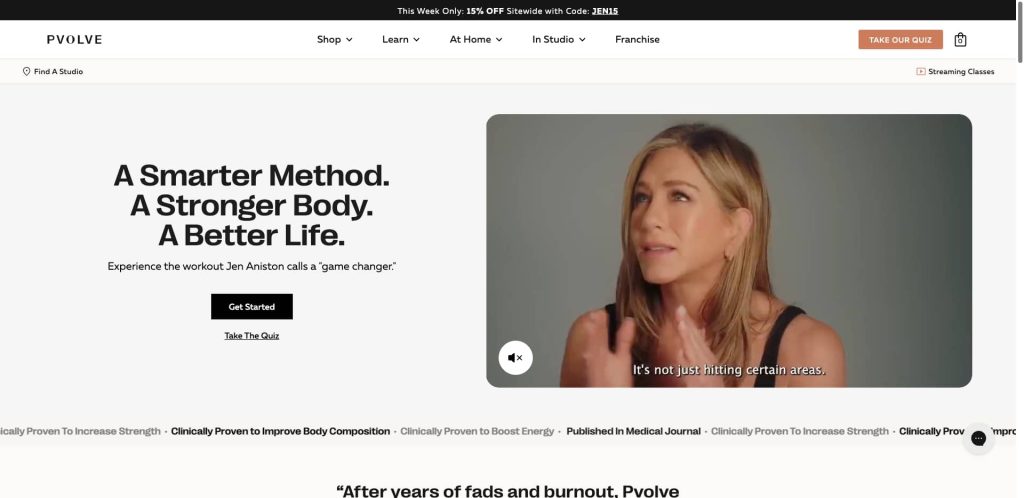
17. P.volve
Location: Chicago, IL
3 Key Takeaways:
- Light, clean, and elegant design aligned with brand tone.
- Personalization and guided workout paths.
- Product and fitness integration for ecommerce flow.
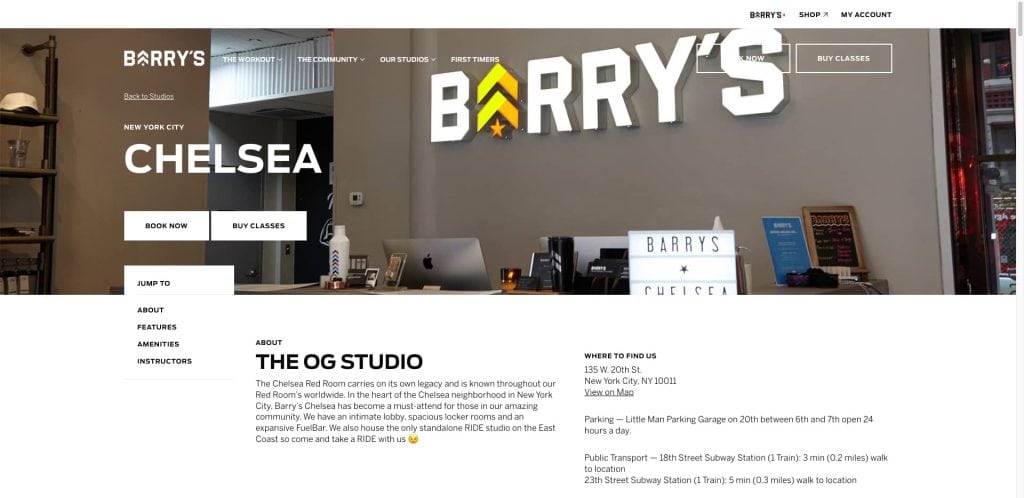
18. Barry’s Ride Studio
Location: Chelsea, NY
3 Key Takeaways:
- Local identity integration with imagery.
- Quick load times and intuitive UX.
- Optimized CTA placement for mobile users.
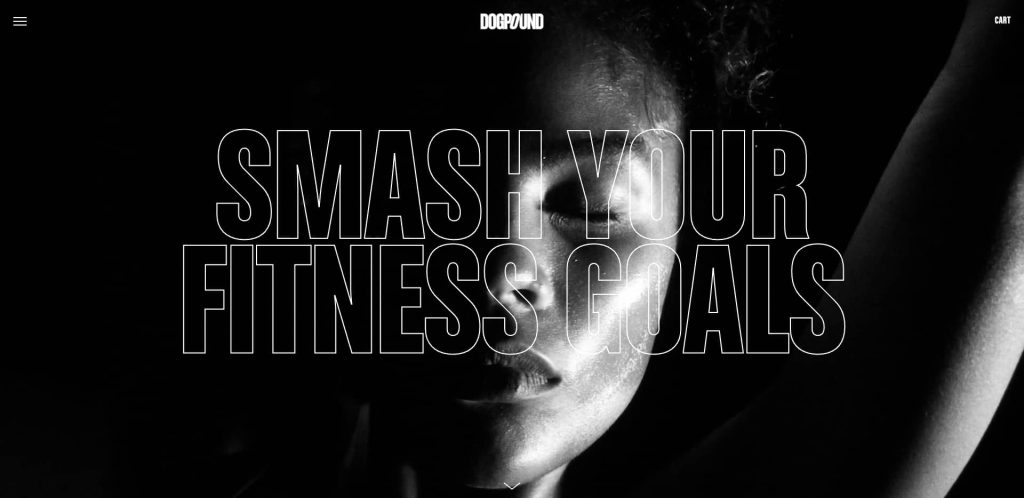
19. DogPound
Location: New York, NY
3 Key Takeaways:
- Celebrity-focused branding and social proof.
- High-impact visuals with a monochrome palette.
- Minimal text for a bold luxury feel.
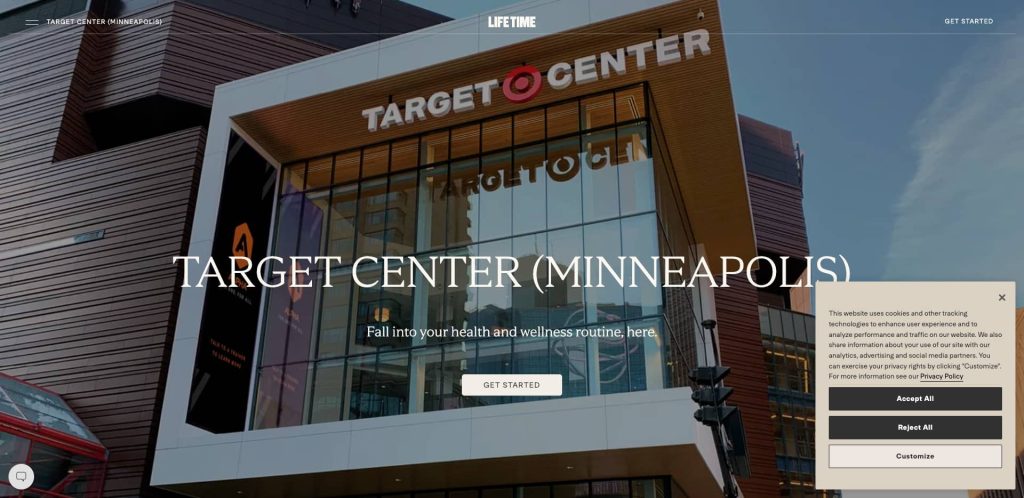
20. Life Time Fitness
Location: Chanhassen, MN
3 Key Takeaways:
- Resort-style experience communicated through visuals.
- Extensive feature list with mega menu navigation.
- Integrates class schedules, amenities, and memberships seamlessly.
Take Your Gym Website to the Next Level
Building a good website is just the start. To truly grow your gym, your site needs to convert, connect, and reflect your brand’s promise to help clients reach their fitness goals. Whether you started with a template or a DIY website builder, there comes a point where expert insight can make the difference between average and exceptional.
Your website is essential to attracting potential customers, showcasing your programs, and turning clicks into memberships. From streamlining your landing page to improving load speed and visuals, we’re here to help you stand out in a crowded market.
Hire a professional team that understands the fitness industry and knows how to build sites that drive real results.
FAQs About Gym Website Design
What makes the best gymnasium site design?
The best site design uses a clean and minimalist design, includes a responsive website layout, clear CTAs, engaging content, and social media links. It also showcases transformation stories and integrates gym software for scheduling, billing, and communication. Explore our examples of great gym websites for inspiration.
How do I create a gym website that stands out?
Start by identifying what sets your gym apart and ensure that it is prominently featured throughout your website. Use eye-catching and professional web design, strong headlines, and engaging imagery. Make your website stand out with features like a custom gym app, seamless signup process, and mobile optimization.
Why is a gym website essential if you’re a gym owner?
A gym website is essential to reach potential customers and help grow your fitness center. It acts as your 24/7 salesperson, showcasing your offerings, highlighting fitness challenges, and supporting online sign-ups and bookings. A well-designed website can help you attract more traffic and improve gym marketing outcomes.
What pages does a website for your gym need?
Your gym’s website requires a homepage, about page, class schedule, pricing, contact page, testimonials, and blog. It’s a good idea to include a landing page for promotions and SEO-targeted articles to increase engagement. These pages on your website guide visitors through their fitness journey and encourage action.
Can I use a page builder to create a professional web presence?
Yes, a page builder can be used for building a gym website, but it’s crucial to choose one that supports mobile responsiveness and integrates with gym software. While DIY options work for some, many gym owners find more success working with experts in website design for gyms.
How does your website design influence people interested in your gym?
The design of your gym website influences trust, ease of navigation, and whether visitors decide to sign up. A gym website that is optimized with compelling visuals, fast load speed, and clear benefits throughout your website helps convert interest into memberships.
Should I connect my gym app and website, and mobile experiences?
Yes, your website and mobile app should provide a seamless user experience. Linking your gym app to your website can help streamline booking, membership management, and class check-ins, enhancing customer satisfaction and retention.
How can a website help you compete with other fitness centers?
A well-designed gym web design builds credibility, supports SEO, and allows you to communicate what your gym offers compellingly. The right website can help you attract the right audience and build long-term brand loyalty.
When is the right time to hire a professional to build your gym website?
If you’re opening a new gym, rebranding, or your current website is outdated, it’s a good idea to hire a professional. Investing in a site that’s fast, responsive, and optimized for your audience ensures your website can help drive business success from day one.



